In this article, Canstar Blue compares different types of electric heaters and the costs of running them. Electric heaters are an ideal choice if you are looking for quick and simple warmth this winter. There are various types and models of electric heaters available at different price points to suit many budgets, including those with energy-efficient functions.
Canstar Blue has compiled a comprehensive list of electric heaters to make warming your home a little simpler.
Types of electric heaters
Which type of electric heater is cheapest to run?
Different types of electric heaters will have different usage costs. Some electric heaters use fans, others take longer to warm up and some radiate more efficiently than others. To get a better idea of how much your electric heater costs to run, compare winter heating costs by reading the following Canstar Blue article.
Winter Heating Costs Explained
Compare electricity providers
If you are looking to save money on your winter electricity bill, or if you haven’t compared your electricity provider in a while, check out some of the latest electricity deals below.
Here are some sponsored deals from the retailers on our database that include a link to the retailer’s website for further details. These are products from referral partners†. These costs are based on the Ausgrid energy network in Sydney but prices may vary depending on your circumstances. This comparison assumes general energy usage of 3900kWh/year for a residential customer on a single rate tariff. Please use our comparison tool for a specific comparison in your area and to see other products in our database that may be available. Our database may not cover all deals in your area. As always, check all details of any plan directly with the retailer before making a purchase decision. Here are some sponsored deals from the retailers on our database that include a link to the retailer’s website for further details. These are products from referral partners†. These costs are based on the Citipower network in Melbourne but prices may vary depending on your circumstances. This comparison assumes general energy usage of 4000kWh/year for a residential customer on a single rate tariff. Please use our comparison tool for a specific comparison in your area and to see other products in our database that may be available. Our database may not cover all deals in your area. As always, check all details of any plan directly with the retailer before making a purchase decision. Here are some sponsored deals from the retailers on our database that include a link to the retailer’s website for further details. These are products from our referral partners†. These costs are based on the Energex network in Brisbane but prices may vary depending on your circumstances. This comparison assumes general energy usage of 4600kWh/year for a residential customer on a single rate tariff. Please use our comparison tool for a specific comparison in your area and to see other products in our database that may be available. Our database may not cover all deals in your area. As always, check all details of any plan directly with the retailer before making a purchase decision. Here are some sponsored deals from the retailers on our database that include a link to the retailer’s website for further details. These are products from our referral partners†. These costs are based on the SA Power network in Adelaide but prices may vary depending on your circumstances. This comparison assumes general energy usage of 4011kWh/year for a residential customer on a single rate tariff. Please use our comparison tool for a specific comparison in your area and to see other products in our database that may be available. Our database may not cover all deals in your area. As always, check all details of any plan directly with the retailer before making a purchase decision.
![]()
9% Less
than reference price
$1,651
Price/year (estimated)
Go to Site

15% Less
than VDO
$1,238
Price/year (estimated)
Go to Site

9% Less
than reference price
$1,888
Price/year (estimated)
Go to Site

9% Less
than reference price
$2,036
Price/year (estimated)
Go to Site
Oil column electric heaters
Oil column electric heaters are oil-filled units that disperse heat for extended periods of time. Oil inside the fins is heated without the unit exterior getting too hot to touch. This type of electric heater can be used to heat medium-sized rooms and will still produce heat for a period of time after the appliance is switched off.
Oil column electric heaters are relatively inexpensive appliances, retailing between $35-$900.
Oil column electric heater pros and cons
Pros
- Suitable for people with allergies
- These electric heaters don’t circulate heat using a fan and therefore are less likely to spread dust and trigger airborne allergies
- Energy-efficient functions
- They have energy-efficient functions to conserve electricity (eco mode)
- Stay warmer for longer
- Oil column electric heaters circulate heated oil for some time after being turned off, potentially saving electricity.
Cons
- Risk of burns
- Although the external unit doesn’t become boiling hot, it still warms up enough to pose a burn risk
- Expensive to use
- This electric heater takes longer to heat up, which may result in higher energy use
- Bulky
- Oil column electric heaters are a larger appliance compared to other electric heaters.
Cheap oil column electric heater
Goldair 1000W 5-Fin Oil Column Electric Heater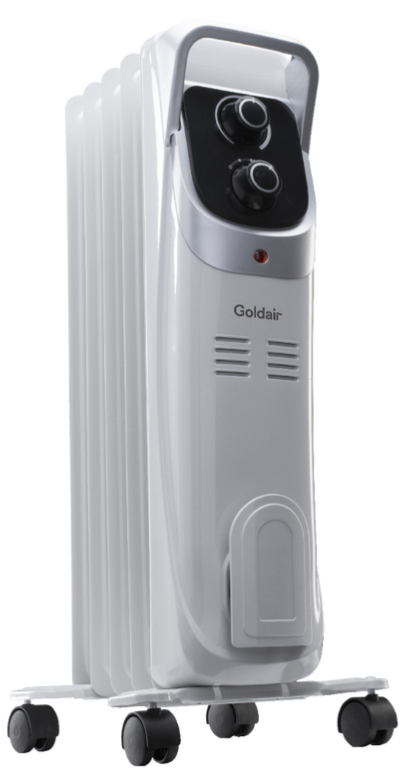
Goldair is known for its heating appliances including electric blankets and heaters. The Goldair 5-fin oil column heater retails for $69 making it a cheaper heating option and features three heat settings, adjustable thermostat and an integrated carry handle so you can easily move it from room to room.
Electric panel heaters
With a built-in fan, electric panel heaters can be a great option for heating large rooms. Their slim design makes them convenient for homes with limited floor space, and they can be wall-mounted for further space-saving.
Depending on the size and wattage of electric panel heaters, they retail approximately between $59-$500.
Electric panel heater pros and cons
Pros
- Slim and lightweight
- This type of electric heater has a more compact design that can be freestanding or wall-mounted
- Consistent heat
- It will heat and disperse air, creating consistent heat throughout the room
- Long-lasting warmth
- Electric panel heaters are a good fit for homes that keep the heater running for extended periods of time.
Cons
- Fans can be noisy
- Not all models have fans installed but those that do can be loud
- Expensive to run
- Electric heaters that disperse heat with a fan can attract higher running costs in the long run
- Expensive up-front costs
- Electric panel heaters can be expensive to buy
- There are budget-friendly models.
- Electric panel heaters can be expensive to buy
Cheap panel heater
De’Longhi 2400W Electric Panel Heater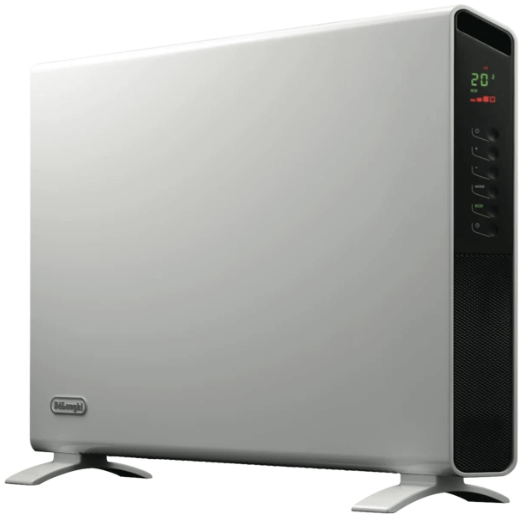
The De’Longhi 2400W Panel Heater can efficiently warm a room of up to 60 square metres. It is 9cm wide with three knobs for fan speed, 24-hour timer and thermostat control. This electric panel heater has anti-frost function and a tip-over safety system.
Radiant heaters
Radiant heaters are an ideal personal electric heater, with an exposed heating element that helps to heat anything in front of it quickly. They come in portable and wall-mountable designs for indoor and outdoor spaces.
Radiant heaters retail between $30-$1,000 or more, depending on the size and model.
Radiant heater pros and cons
Pros
- Instant warmth
- Radiant heaters warm-up quickly
- Affordable
- They are a cheap electric heater option, with some models retailing for $30
- Safety features
- Some radiant heaters come with an oxygen-depletion sensor that will shut the heater off if low oxygen is detected
- Some models have a flame failure shut-off feature that will turn off the gas supply if the flame is extinguished.
Cons
- Exposed element
- Though covered by a grate, radiant heaters have an exposed heating element which poses a risk of burns and fire
- Limited heating
- Heats what is directly in front and struggles to heat a whole room
- Energy efficiency
- Radiant heaters can have high running costs.
Cheap radiant heater
Kmart radiant heater
Kmart’s radiant heater is an affordable electric heater, retailing for $59. It features an adjustable thermostat, safety tip-over switch, two heat settings and four quartz heating tubes.
Electric fan heaters
Electric fan heaters are a smaller, more portable electric heater. Ceramic fan heaters have ceramic heating elements, which cool faster than traditional metallic heating elements. These electric heaters work by propelling air over a heating coil with a fan, then rapidly blowing the warm air into the room.
Fan heaters retail from $15-$1,700, with various models depending on heating needs.
Fan heater pros and cons
Pros
- Small and portable
- Electric fan heaters come in smaller-sized models, making them convenient to move throughout the house
- Quick to warm up
- They are designed to provide instant heat for small spaces
- Can be used throughout the year
- Similar to reverse-cycle air conditioners, some electric fan heaters can be used for heating and cooling.
Cons
- High running costs
- Electric fan heaters can be expensive to use due to their limited heating capabilities, making them less energy efficient
- Loud
- These heaters can be noisy due to the internal fan, growing louder as you switch to higher fan settings.
Cheap fan heater
Heller Oscillating Upright Electric Fan Heater – 2000W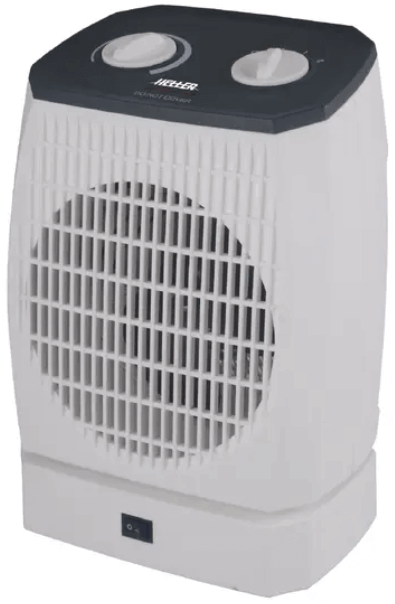
The Heller Oscillating Upright Electric Fan Heater is a compact heater that retails for around $45. With multiple heat and fan settings, it can be an ideal choice for different seasons as the oscillating movement dispenses heat across the room.
Electric ceramic heater
Ceramic heaters have a ceramic heating plate that is warmed by electricity, that then heats the surrounding air. Ceramic versions of metallic electric heaters are available, including standard electric heaters, panel heaters, fan heaters and tower heaters.
Due to the different types of ceramic heaters, retail prices vary between $49 and $1,700.
Cheap ceramic heater
Dimplex 1.5kW Ceramic Heater
Retailing for around $70, the Dimplex 1.5kW Ceramic Heater is a stylish choice for heating. Featuring brushless DC motor technology, you can expect a more energy-efficient appliance that can warm a small space efficiently.
Electric fire heater
Electric fire heaters are a great combination of a simulated fire with an electric heater. Electric fire heaters can create an ideal atmosphere without the hassles of firewood, soot and smoke.
Retailing from $179-$2,000, most electric fire heaters come in a range of sizes to heat different-sized rooms. There are also wall-mounted designs or portable models to fit the décor of any given room.
Electric fire heater pros and cons
Pros
- Safe to use
- Electric fire heaters don’t produce smoke or create an actual flame, making them a safer choice compared to a traditional fireplace
- Easy to install and move around
- Portable models can be moved to colder rooms
- Wall-mounted electric fire heaters have no chimney and are generally simple to install
- Minimal maintenance
- Without the need to maintain flues, tubes or thermal probes that a typical fireplace has, electric fire heaters have fewer maintenance requirements
- Adjustable temperature
- Electric fire heaters have temperature control, as opposed to unpredictable wood-burning fireplaces.
Cons
- Not as warm as a fireplace
- Wood can be added to a traditional fireplace to build more heat, whereas an electric fire heater can only reach certain temperatures.
Cheap electric fire heater
Dimplex Mini Cube Optiflame Portable Electric Fire
The Dimplex Mini Cube Optiflame Portable Electric Fire is ideal for heating small spaces. It features a curved steel casing and two heat settings. The Optiflame LED provides a realistic coal effect that can be turned on without using the heat source.
What to consider when buying an electric heater
Prior to purchase, consider the following:
- Type of electric heater
This will depend on your individual heating needs. If you need to heat a larger space, then an electric panel heater may be an ideal choice. For heating small spaces, an electric fan heater or electric fire heater could be for you - Size of area
Some electric heater models are better suited to certain room sizes than others. As a general guide you can match the appliance watt power to the room size:
| Room size | Watt power |
|---|---|
| Small room (5m2 – 20m2) | 1000W – 1500W |
| Medium room (20m2 – 30m2) | 2000W – 2500W |
| Large room (30m2 – 50m2) | At least 2500W+ |
General guide only
- Energy star rating
Checking the energy star rating for an appliance can help determine how much energy your heater may use and how it could impact your energy bill - Running costs
Running costs will change depending on a number of factors. If the electric heater has a low energy rating, the specific heat setting you’re using and how long you leave it on for can all impact running costs - Purchase cost
Some electric heaters may be more expensive to buy up front but, if they have a better energy rating than cheaper models, it could help lower energy costs in the long run. There are a range of price points for electric heaters, making purchase cost less of a hurdle in keeping warm.
Which type of electric heater should you buy?
Choosing the right electric heater for your home can come down to personal preference for the space you want to heat. With an abundance of electric heaters to choose from, the decision can be tough. Some customers look for portability, some prefer to save space, while others want strong heating capabilities.
For further information on gas versus electric heaters, click on the Canstar Blue link below.
Image credits: Vershinin89/Shutterstock.com
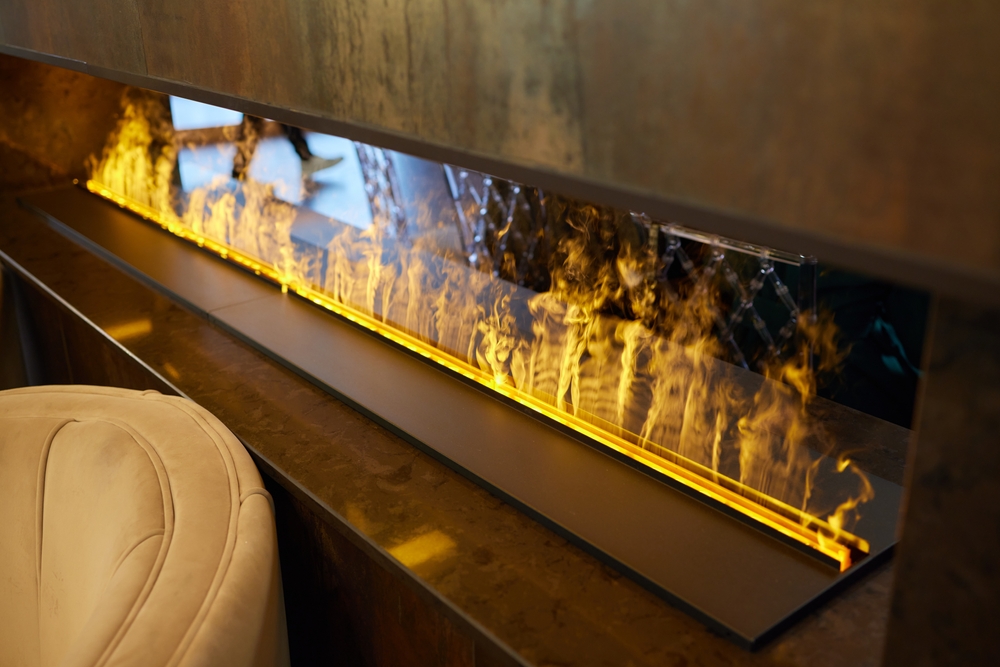



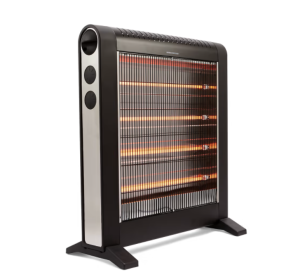
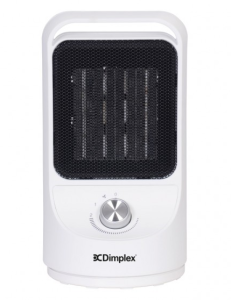
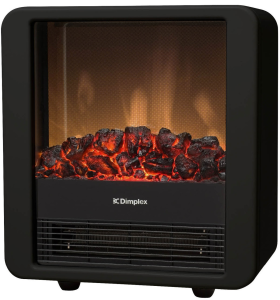

Share this article